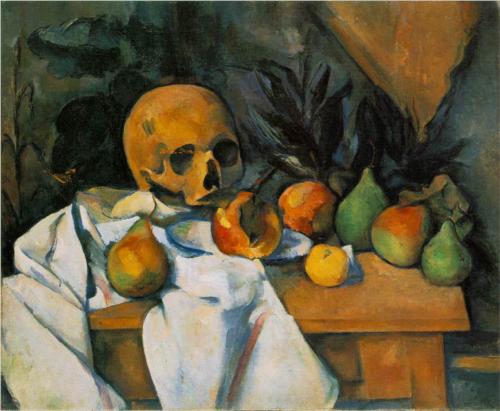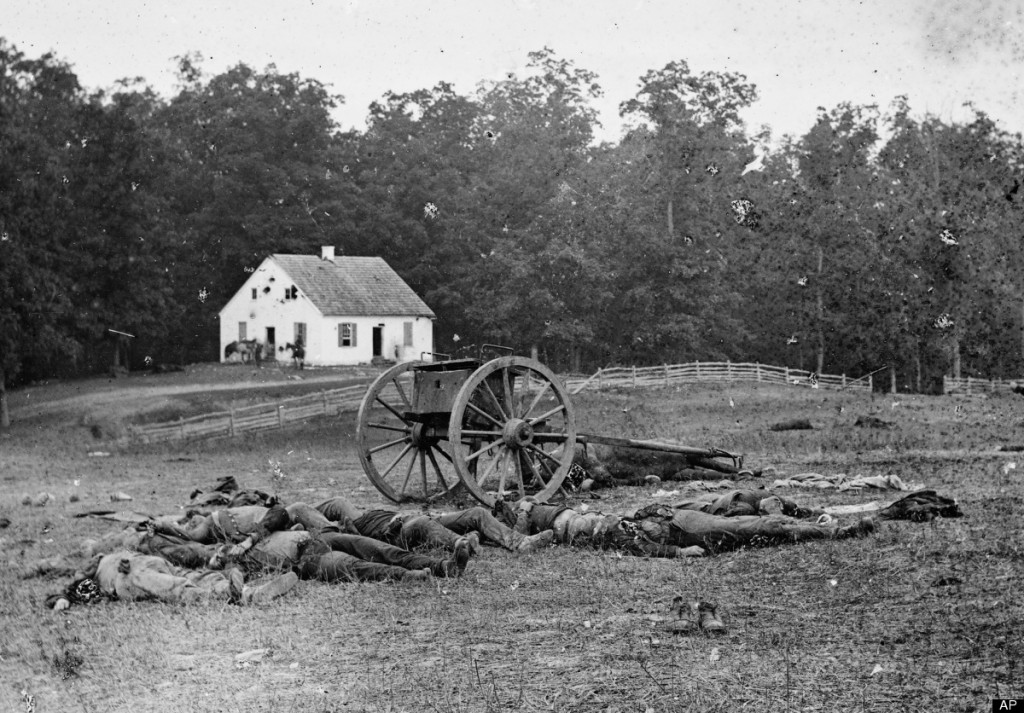All CLEP Humanities Resources
Example Questions
Example Question #2 : Analyzing The Content Of 2 D Visual Art
The painter Gilbert Stuart was most well-known for his __________.
historic paintings
domestic scenes
landscapes
portraits
still lifes
portraits
Gilbert Stuart (1755-1828) was one of the very first well known American painters. During the Revolutionary Era, Stuart became essentially the "court painter" of the early American government because of his portraits of leading figures. Stuart's work includes the most famous portraits of George Washington, Thomas Jefferson, James Madison, and many other of America's Founding Fathers.
Example Question #1 : Understanding Terminology That Describes 2 D Visual Art
An artwork described as "pastoral" indicates that its subject matter is __________.
classical
historical
urban life
religious
rural life
rural life
"Pastoral," derived from the same root as "pasture," typically indicates something having to do with shepherds or other kinds of livestock keepers. In art, a "pastoral" piece depicts figures in rural life in some form, even if not necessarily a scene of herding. After the Industrial Revolution, such paintings were made to evoke a country life that was seen as gone.
Example Question #2 : Understanding Terminology That Describes 2 D Visual Art
When describing how an artist arranges elements in a drawing or painting, one is referring to the work's _________________.
Study
Composition
Medium
Matte
Collage
Composition
A study is done before a work is finished, and does not refer to how elements are put together in a work. Matte refers to a non-glassy surface or finish. A collage may incorporate different style or mediums (the material the artist works with), but does not refer to how these are arranged. Composition describes how the elements come together to create the work.
Example Question #43 : Seventeenth And Eighteenth Century 2 D Art
The artist Francisco Goya is from what country?
Italy
Argentina
Brazil
France
Spain
Spain
Francisco Goya is from Spain.
Example Question #1 : Analyzing The Form Of Nineteenth Century 2 D Visual Art

The above image is a woodblock print, meaning it __________.
can be enlarged and miniaturized easily
can have its colors easily changed
can be easily replicated in the same form
can only be shown in a large format
cannot be moved from the place it was first drawn
can be easily replicated in the same form
The woodblock format, popular throughout Asia, is an artistic format that is produced by having a large piece of wood cut into and dyed by the artist. Thereafter, this woodblock can be printed onto canvas or paper, making it extremely easy to duplicate the work of art again and again.
Example Question #161 : Renaissance To Contemporary 2 D Art

The composition above is a painting in the genre of __________.
landscape
still life
portrait
nude
history painting
still life
The painter of this work, Paul Cézanne, was particularly noted for his still lifes. The one in this question, "Still Life with Skull," was painted in 1898 and is particularly notable for the inclusion of a skull, a notable feature of Cezanne's later work from the 1890s on. Cézanne's use of broad brushstrokes, layered color, and different perspectives helped create a bridge from impressionism to modern art movements like cubism.
Example Question #311 : 2 D Art

The above photo is taken from what conflict?
The American Civil War
The Franco-Prussian War
The Mexican American War
The Spanish American War
The Napoleonic Wars
The American Civil War
During the American Civil War, the medium of photography was still relatively new, having only been invented a few decades before the outbreak of war in 1861. The photographer Matthew Brady was the pioneering figure in developing photography throughout the war. By capturing war in the realistic medium of photography, Brady both helped people see war in a different manner and appreciate the possibilities of photography.
Example Question #3 : Analyzing The Content Of 2 D Visual Art
Who was the French artist who spent the last years of his life living in Polynesia and painting its inhabitants?
Henri Matisse
Vincent van Gogh
Paul Cézanne
Édouard Manet
Paul Gauguin
Paul Gauguin
Paul Gauguin was an important Post-Impressionist whose early work experimented with color and symbolism, but Gauguin's work took on a new form after visiting Tahiti in the 1880s. Gauguin began capturing the culture of Polynesia and started using symbols of Polynesia and images of Polynesians themselves in his art. In the 1890s, he permanently moved to the island of Punaauia in French Polynesia, and painted more and more symbolic paintings that played with color and structure.
Example Question #268 : 2 D Art

The above painting is representative of what artistic movement?
Pointilism
Abstract Expressionism
Impressionism
Surrealism
Cubism
Impressionism
This painting, Edgar Degas' "The Dance Lesson," was painted in 1879 and is a classic representation of impressionism. With its visible and broad brush strokes and its detached point of view, this painting features the hallmarks of impressionism, a painting style developed in France in the late nineteenth century. Degas preferred to call his artistic style "realism," because he believed his method of painting captured the realistic emotion of a scene, if not an exact representation of it.
Example Question #1 : Identifying Artists, Works, And Schools Of 2 D Visual Art
All of the following painters were Impressionists except __________.
Claude Monet
Édouard Manet
Pierre-August Renoir
Henri Matisse
Paul Cézanne
Henri Matisse
Impressionism was a significant artistic movement developed in France during the late nineteenth century that utilized visible brushstrokes, representations of natural light, and everyday scenes. Challenging traditional ideas of art, the movement was initially derided by critics, but proved hugely influential. Its leading artists included Éduouard Manet, Claude Monet, Pierre-Auguste Renoir, and Paul Cézanne. Henri Matisse was a full generation younger than the impressionists, and was highly influenced by them, but helped develop modern art in the early twentieth century.
All CLEP Humanities Resources




